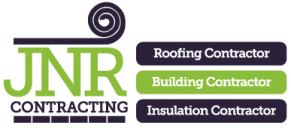Building construction is a multi-faceted process that involves not only the actual construction phase but also the maintenance that follows.
Choosing the right materials for a building is critical in ensuring its long-term viability and aesthetics, with one of the key considerations being the ease and cost of maintenance.
The materials used in a building contribute significantly to its overall upkeep costs and lifespan. It’s an aspect that’s often overlooked in the pursuit of short-term savings or aesthetic appeal, but it can have significant implications in the long run.
In this blog, we will delve into the importance of choosing the right building materials from a maintenance perspective.
We’ll explore the different types of materials, their maintenance requirements, and factors to consider when selecting building materials. Additionally, we’ll also examine the emerging trends in sustainable and maintenance-friendly building materials.
Whether you’re a building owner, a property manager, an architect, or a builder, this guide will help you make informed decisions that will not only enhance the durability of your buildings but also reduce their maintenance costs and improve their environmental footprint.
Understanding Maintenance for Buildings
Maintenance, in the context of buildings, refers to the combination of technical and administrative actions taken to ensure the items and elements of a building retain or restore their ability to perform their intended functions. It’s an ongoing process that begins once a building is constructed and continues throughout its lifespan. Now you understand what building maintenance is, let’s talk about why it is important.
Building maintenance is crucial for several reasons. Firstly, it ensures that the building remains safe and healthy for its occupants, preventing issues such as structural failures, mould growth, or fire hazards. Secondly, it preserves the value of the building, as properties in good repair tend to be worth more than those in a state of disrepair.
Thirdly, it enhances the building’s aesthetic appeal, contributing to a positive perception from both the occupants and the public. Lastly, it can reduce the building’s operational costs. Regular preventive maintenance can help spot potential issues before they become major problems, thereby avoiding costly emergency repairs.
When we think of maintenance, we usually focus on the activities needed to keep a building in good shape, like painting, cleaning, or repairing. However, maintenance actually begins at the design and material selection stage.
Choosing the right materials can significantly reduce the amount and complexity of maintenance required over the building’s life, leading to savings in time, money, and resources.
Therefore, a good understanding of the different building materials, their durability, and their maintenance needs is crucial for anyone involved in the design, construction, or management of buildings.
Factors to Consider When Choosing Building Materials
When choosing materials for a building, several factors need to be taken into consideration to ensure the structure’s durability, aesthetics, functionality, and ease of maintenance. Here are some key factors to consider:
- Durability: This refers to the ability of a material to withstand the rigours of its environment without significant deterioration. A building’s materials should be able to endure the physical stress and environmental conditions it will be subjected to, such as wind, rain, temperature fluctuations, and more.
- Ease of Maintenance: Some materials require more maintenance than others. For instance, wood may need to be treated regularly to prevent rot, while stone or brick may require little more than occasional cleaning. Consider the cost and effort required for maintenance when selecting materials.
- Cost-Effectiveness: This not only includes the initial cost of the material but also the long-term costs associated with maintenance, repairs, and replacements. A cheaper material may end up costing more in the long run if it requires frequent and expensive maintenance.
- Aesthetic Appeal: The material should align with the desired look and feel of the building. It should complement the architectural style and blend in with its surroundings.
- Safety Considerations: Some materials are fire-resistant, while others may be prone to causing injuries due to their hardness or sharp edges. Consider safety aspects when choosing materials, especially in buildings intended for public use or those housing vulnerable individuals such as children or the elderly.
Remember, the best building material is not necessarily the most expensive or the most durable. It’s the one that best meets your needs considering all these factors. It’s about balancing cost, performance, aesthetics, and maintenance needs to achieve the best overall outcome.
Conclusion
In conclusion, choosing the right building materials from a maintenance perspective is crucial for the long-term health, functionality, and aesthetics of a building.
By considering factors such as durability, ease of maintenance, cost-effectiveness, environment and climate suitability, aesthetic appeal, and safety, you can make informed decisions that will minimise the time, effort, and cost associated with upkeep.
Maintenance-friendly building materials, such as fibre cement siding, vinyl windows, composite decking, metal roofing, porcelain tiles, and engineered quartz countertops, offer excellent options for reducing maintenance requirements while still providing durability and aesthetic appeal.
These materials often require minimal painting, staining, sealing, or repairs, making them cost-effective choices in the long run.
At JNR Projects, we always supply our customers with high-quality materials and do a great job fitting everything. Get in touch today for more information on our services.
